Soundscape a.k.a. S-2000   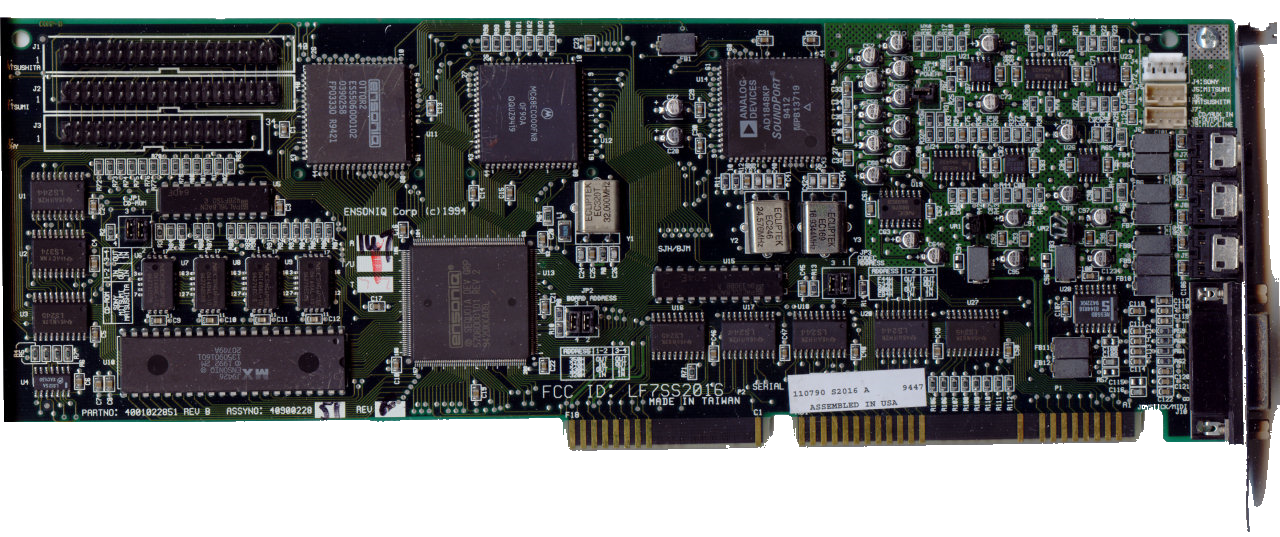 
Launched: 1994
Audio Codec: Analog Devices AD1848KP
Chipset: Ensoniq OTTOR, Sequoia ODIE
DAC: (Embedded in AD1848)
Part #:
4001022851 (rev B)
ROM: 2 MB patch set (Part# 1350901601)
FCC ID: LF7SS2016
Price when New: $150
Panasonic/Mitsumi/Sony or IDE CD-ROM connectors.
The original Soundscape was Ensoniq's first direct foray into the PC sound card market. It was a full-length ISA digital audio and 'wavetable' sample-based synthesis audio card, equipped with a 2MB Ensoniq-built ROM-based patch set comprising 317 instrument samples.
Several variants of the S-2000 exist, with a combination of CD-ROM interfaces or none at all, and also either a 2 MB (Revision A) or 1 MB (Revision B) ROM for samples. You can tell if a card is 1 MB or 2 MB by checking the "MX" ROM chip on the left side of the board - it will have either "1M" (or "1M2") or "2M" printed on it.
"While surveying the sound card market over the past few months, we have been keeping our eyes on a promising prototype sound card from Ensoniq called Soundscape. Though not currently available, it will be in the near future. For now, Ensoniq is licensing the technology to other manufacturers. For instance, the Aztech Wave Power uses the Ensoniq chipset, although with an 8-bit ROM to store the sound. The Soundscape card will use 16-bit ROMs (OEMs, however, may opt for 8-bit to keep the price down), giving the various tambres a richer sound. The card also has an on-board Motorola 68000 processor to run it’s own downloadable firmware. (Firmware means drivers that are loaded on a card prior to playing a game to carry out various modes of operation. They use a small portion of RAM on the sound card and are used in place of loading a TSR driver into a computer’s valuable RAM.) This approach may extend the life of the card, as upgrades to the firmware would be available directly from Ensoniq (or one of their OEMs) when they become available. For gamers, one need only run a brief initialization program to configure the card for either General MIDI wave table synthesis, MT-32 emulation, or FM emulation. The Soundscape may be run as a synthesis sound card only (like a Roland SCC-1 Sound Canvas mentioned later in this article) by disabling the on-board DAC. This is a good feature for those gamers who already own a Sound Blaster or a Sound Blaster Pro. The only drawback to this approach is that one must give up two precious slots in one's computer; however, the Soundscape may be configured to occupy an 8-bit slot. Additionally, our prototype Soundscape card is a snap to set up with software configurable jumpers.
The on-card MIDI
interpreter on this card is another strong feature. It allows the gamer to select General MIDI from his or her game setup screen and have the MIDI data play back through the card itself, rather than passing MIDI data to a MIDI keyboard.
One drawback to this card is that it has no Yamaha FM synthesis chip. Instead of an FM chip, the card does FM emulation, which does not
sound as good as the real thing. Ensoniq's Joe Cotellese explains that, 'The decision to use FM emulation over a Yamaha OPL chip was made because FM synthesis is a 17 year old technology which gives inferior sound when compared to wave table synthesis. You'll find that most of the larger game manufacturers are supporting MT-32 and General MIDI, but by including FM emulation we offer some backwards compatibility with older software at a lower cost.' We've been told that possible OEMs of this card will have either an OPL3 daughter card or an OPL3 chip on-board." Computer Gaming World, October 1993
Rich Heimlich said this of the SoundScape: "Solid 2mb patch set. Excellent Windows card. Game developers are now
supporting it in DOS games so past problems with support are becoming
a non-issue. SB/FM support is emulated but their emulator is one of
the best now.". He scored digital quality as 7 out of 10, and music quality as 7.5 out of 10. Cards with Firmware v1.0 had awful Sound Blaster emulation.
The card was also sold by SPEA/Video 7 under the name Spea Media-FX. This variant came with the same 2 MB sample ROM as the S-2000 Rev.B.
User Benutzaravatar on site https://www.dosforum.de/ did some tests on this card as well as several other Ensoniq cards and the Spea V7 Media FX to verify that the card supports "fake intelligent mode" for MPU-401, and confirmed it worked! Certain games that do a more thorough handshake with a real MPU-401 interface will *not* work (this includes Gateway 1 and 2).
User Manual, Manual Addendum, DOS, NT, Windows 3.x, Windows 9x
Advert
More Images
|
Soundscape Elite    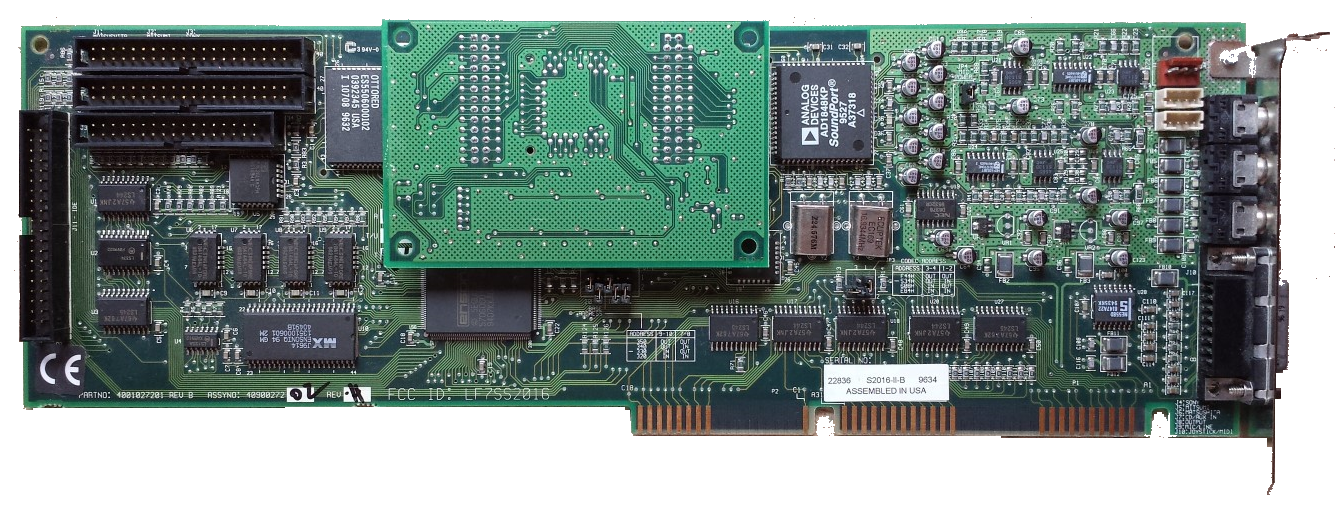
Launched: March 1995
Audio codec: Analog Devices AD1848KP
Chipset: Ensoniq OTTOR2 (68-pin) or OTTORED, and Sequoia ODIE
Part #: 4001027201 (Rev B)
FCC ID: LF7SS2016
ROM: 2 MB (Part #1351000601)
Price when New: $289, later reduced to $210
Compatibility: Ad Lib, Sound Blaster 2.0, Roland MT-32, General MIDI, Windows Sound System and MPC 1 & 2.
The Elite came with all four CD-ROM connectors: IDE, Panasonic, Mitsumi and Sony.
The Elite was Ensoniq's high-end ISA sound card. It offered the highest MIDI quality of any PC sound card they ever made, including the newer AudioPCI. The Elite was really just an S-2000 with some additional features like the effects processor daughterboard.
It continued to use Ensoniq's OTTO synthesizer and Sequoia Development Group's gate array chips alongside a Motorola 68000 CPU to keep the burden of audio processing off the PC's CPU. OTTO provided 16-channel, 32-note polyphony with a 2 MB sample ROM. This was fully GM- and GS-compatible and consisted of the usual 128 GM instruments, 7 drum kits, 61 drum programs and MT-32 instruments. The card also had Ensoniq's ESP signal processor (effects) which allowed for multiple simultaneous effects including reverb and chorus.
"The heavy-duty SoundScape Elite is designed with the gamer in mind. It is General MIDI hardware-compatible and most games can use it as a Sound Blaster (not the stereo Sound Blaster Pro) for digital audio playback. In other words, if you don't see "Ensoniq Soundscape" in your game's setup routine, you can still choose General MIDI for music and Sound Blaster for digital audio. There's no TSR program to hassle with, just an initialization program that unloads from memory when done. And while the instrument sounds occupy only two megabytes of ROM, the Elite sounds better than many four megabyte boards. Its strong characteristics seem to be its drum sounds— high-hats sound like high-hats and cymbals sound like cymbals, rather than the usual white noise. Any game that supports Human Machine Interface's (HMD sound drivers, such as Wing Commander 3, should have a setup option for the Soundscape Elite.
There are patch sets for both General MIDI, Roland GS and the MT-32. You can also hook your Sony, Mitsumi, Panasonic, or IDE ATAPI CD-ROM drive up to one of the Elite's four interfaces. Combined with useful documentation and frequent driver updates from Ensoniq's web site, it's hard to go wrong with this card. The only drawback we found is the lack of a DOS installation program. Windows 95 drivers and a plug-and-play version of this card are available."
Computer Gaming World, Issue 135, October 1995
Elite has arguably the best patch set and an effects processor out there (different to the patchset found on the S-2000), which defaults to some reverb+chorus (configurable by sysex and Windows toolkit). Low host overhead and no memory overhead because the board is essentially a little computer with CPU and RAM. No TSRs. No EMM386. Some have PnP, but rather rare.
Has hardware-based UART compliance. Possibly the best Windows 95 sound card ever.
The Elite was also sold without the effects processor daughterboard, and was simply branded "Soundscape II".
Rich Heimlich rated the Elite, saying "Best 2mb patch set out. Improves on the original by adding an
effects processor including Reverb and Chorus enabled by default and
major percussion improvements. However, those same drums are much
louder than they should be. Could be THE Windows 95 card to have.". He scored it 7.0 for digital quality and 8.0 for music quality out of 10.
User Benutzaravatar on site https://www.dosforum.de/ did some tests on this card as well as several other Ensoniq cards and the Spea V7 Media FX (a licensed version of the SS Elite) to verify that the card supports "fake intelligent mode" for MPU-401, and confirmed it worked! Certain games that do a more thorough handshake with a real MPU-401 interface will *not* work (this includes Gateway 1 and 2).
DOS, NT, Windows 3.x, Windows 9x, Original Disk Images, F/X Toolkit for Win 3.x/9x
More Images

|
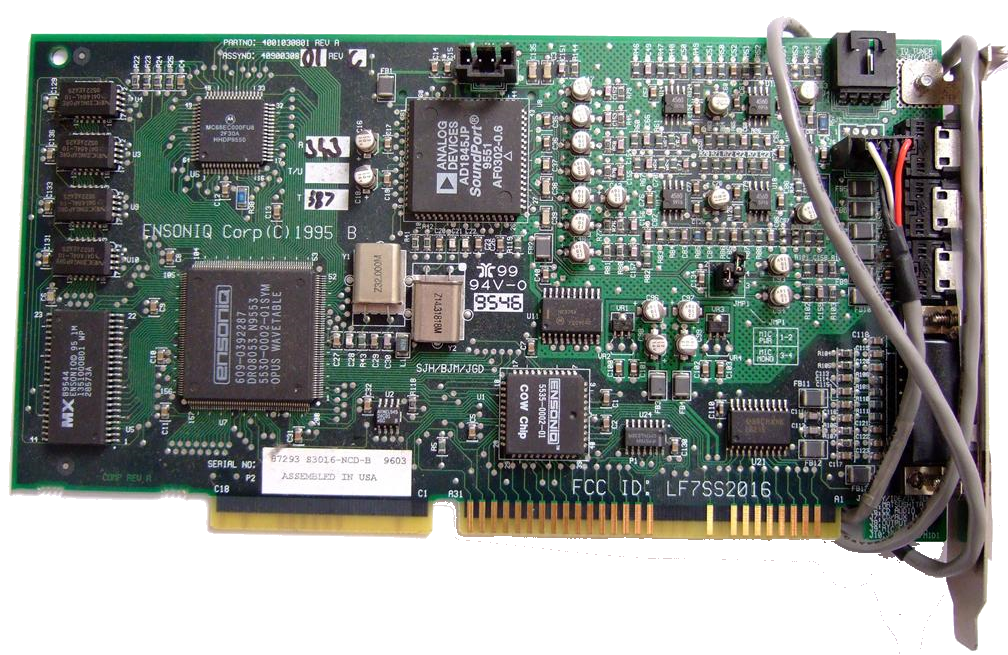 Soundscape OPUS Soundscape OPUS   
Launched: 1995
Chipset: Ensoniq OPUS (5530-0002-01) & COW Chip (5535-0002-01)
Audio codec: Analog Devices AD1845JP
Plug & Play: Yes
Part No.: 4001030801 (Rev A)
ROM: 1 MB (Part #1351000801 WP)
FCC ID: LF7SS2016
(same as Soundscape)
This card was only sold bundled into Gateway 2000 PCs. It was never sold to Ensoniq's customers directly.
OPUS was a Soundscape-like board, but using the Ensoniq "OPUS" multimedia sound chip instead of the OTTO, a chip that was only used on these OEM boards. This chip was essentially a 32-voice wavetable synthesiser and 18-bit DAC, but also supported a CD-ROM interface (despite these not being used) and a joystick interface.
The OPUS is a cost-reduced card compared to the older Soundscape cards, in that all the CD-ROM interfaces have been removed. OPUS is very much like older Soundscapes in performance, but is PnP and uses a different wave port so compatibility with the original S-2000 may be affected.
The OPUS chip has the same number of pins (208) as the earlier Sequoia chip on the Soundscape.
On of the key cost-reductions is the patch set that was reduced to 1 MB and as such is not as high-quality as 2 MB Soundscape cards. The same ROM was also used on the VIVO90.
The OPUS chipset was also used on a combination sound/modem expansion card by NEC called the Harmony.
The OPUS card(s) do not require any TSRs to be loaded.
User Benutzaravatar on site https://www.dosforum.de/ did some tests on this card as well as several other Ensoniq cards and the Spea V7 Media FX to verify that the card supports "fake intelligent mode" for MPU-401, and confirmed it worked! Certain games that do a more thorough handshake with a real MPU-401 interface will *not* work (this includes Gateway 1 and 2).
To install this card in DOS, see the dedicated page that covers that topic.
Drivers
DOS |
Soundscape VIVO / VIVO90       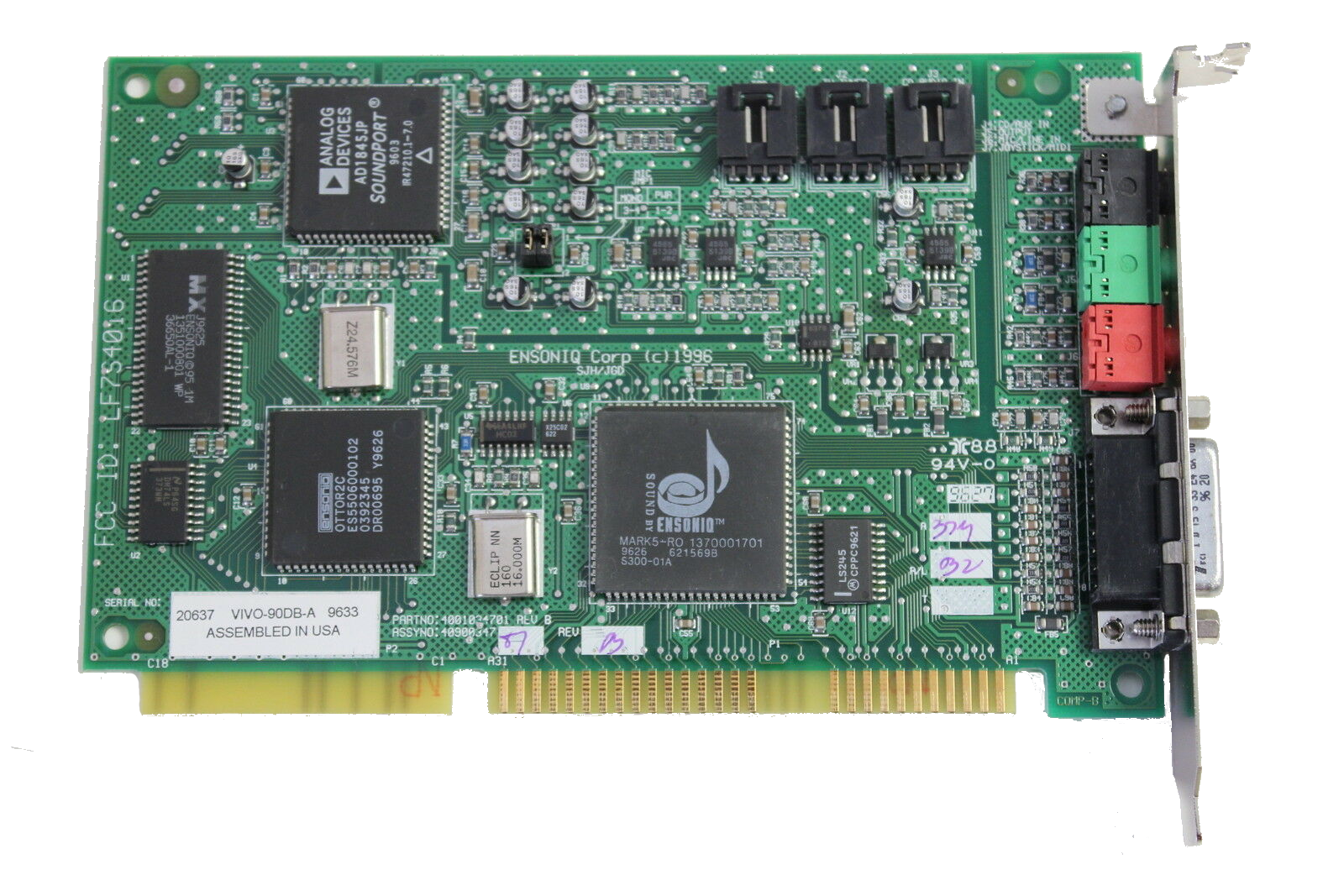
Launched: Late 1995
Chipset: Ensoniq OTTOR2C (5506-0001-02) or OTTORED (5506-0001-02) (68-pin) & MARK5-RO (5300-01A) (84-pin)
Audio codec: Analog Devices AD1845JP
Plug & Play: Yes
Part No.: 4001032201 (VIVO-A), 4001034701 (VIVO-90DB-A / VIVO-90UG-A)
ROM: 1 MB (Part #1351000801 WP)
FCC ID: LF7S4016
Street Price: $75 (10/17/96)
VIVO (aka VIVO90) was Ensoniq's next generation after their Soundscape S-2000-based boards. It was first produced in late 1995. VIVO had similar specifications to the older boards, but was built to cost less to manufacture.
For games compatibility, VIVO supports Ad Lib, Sound Blaster Pro 2.0, and Windows Sound System, just like the earlier OPUS card with which it shares the AD1845JP codec (a newer variant of the AD1848 used on the Soundscape).
The OTTO synth chip, ES5506, was the same one used on the original Soundscape and Soundscape Elite, offering 32-voice polyphony with each voice able to be set to its own pitch, waveform, volume and filtering. A modified version of this same chip was used by Advanced Gravis for their UltraSound card.
"TWO AFFORDABLE NEWCOMERS blast their way to the top of our chart. The Ensoniq Soundscape Vivo 90 was a solid performer in our
tests, and carries a bargain price. The $135 Orchid NuSound PnP 32 landed in the number two slot, thanks to its excellent audio scores.
Features: Plug and Play, high-quality MIDI wavetable, bargain price.
Pro/Con: Very good frequency response, low noise, telephone answering device/modem connector supports PC-based phone answering machine
or Internet phone, trouble-free installation; no IDE connector."
PC World, January 1997
It supports General MIDI music with a 1MB patch set - It is identical to the patch set on the OPUS. It has superior sound quality to SB Pro and SB 16 for games that directly support it. One slightly negative aspect of this card is that it requires EMM386 to be loaded for DOS support and it's a Plug & Play card. The card's Game/MIDI port *DOES* support MPU-401 intelligent mode - see my full review here.
Just like OPUS, VIVO was sold to OEMs including Gateway 2000 to bundle with their desktop PCs, but was also available for purchase separately.
It has software-based UART compliance.
The Soundscape VIVO software only comes with a Windows installer, and through this it installs the DOS drivers into the C:\SNDSCAPE directory. The contents of this directory are slightly different from the SNDSCAPE directory for the other Soundscape models.
Several versions of the VIVO were produced, including the VIVO-A, VIVO-90DB-A, and VIVO-90UG-A. There is no material difference between any of these versions, though all VIVO-A's and early VIVO-90DB-A's came with the MARK5-RO chip while later VIVO-90DB-A's got the MARK5-ROA. It looks like around week 28 of 1996 was when the ROA revision was used instead. OTTO R2C and OTTO RED variants were used interchangeably across the variants:
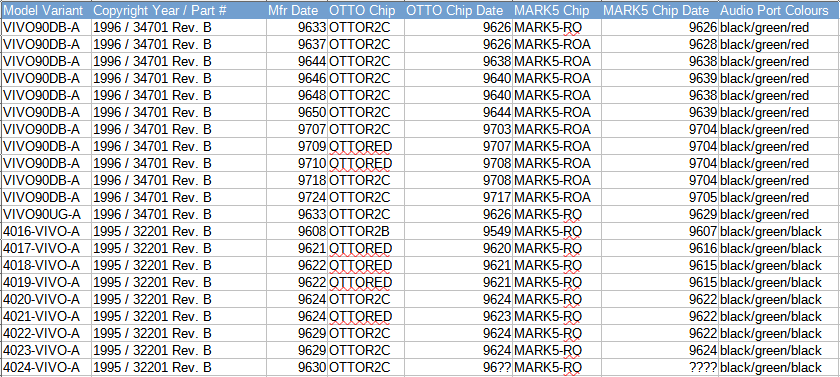
Drivers
Windows 3.x, Windows 9x
User Guide
More Images
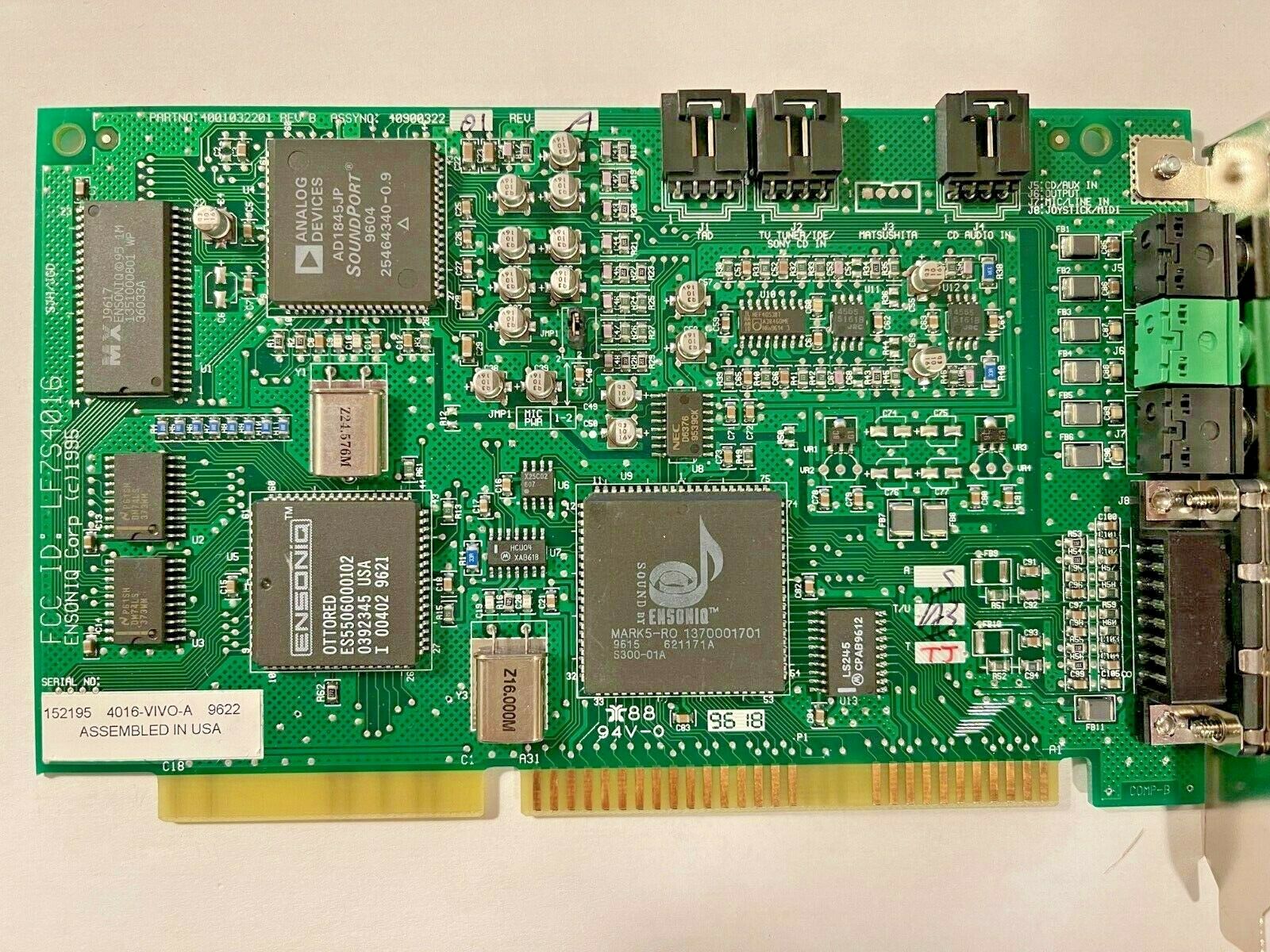 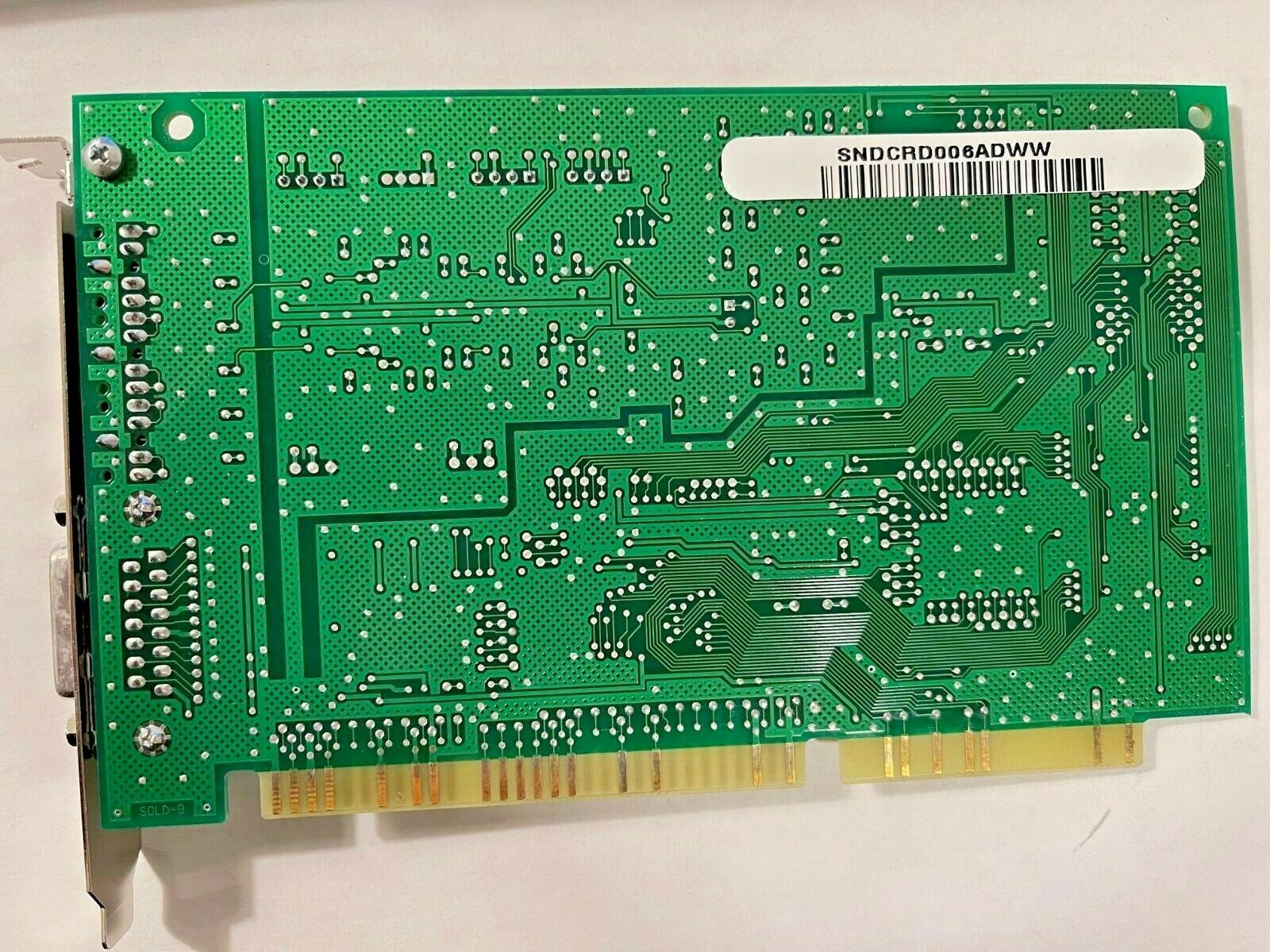  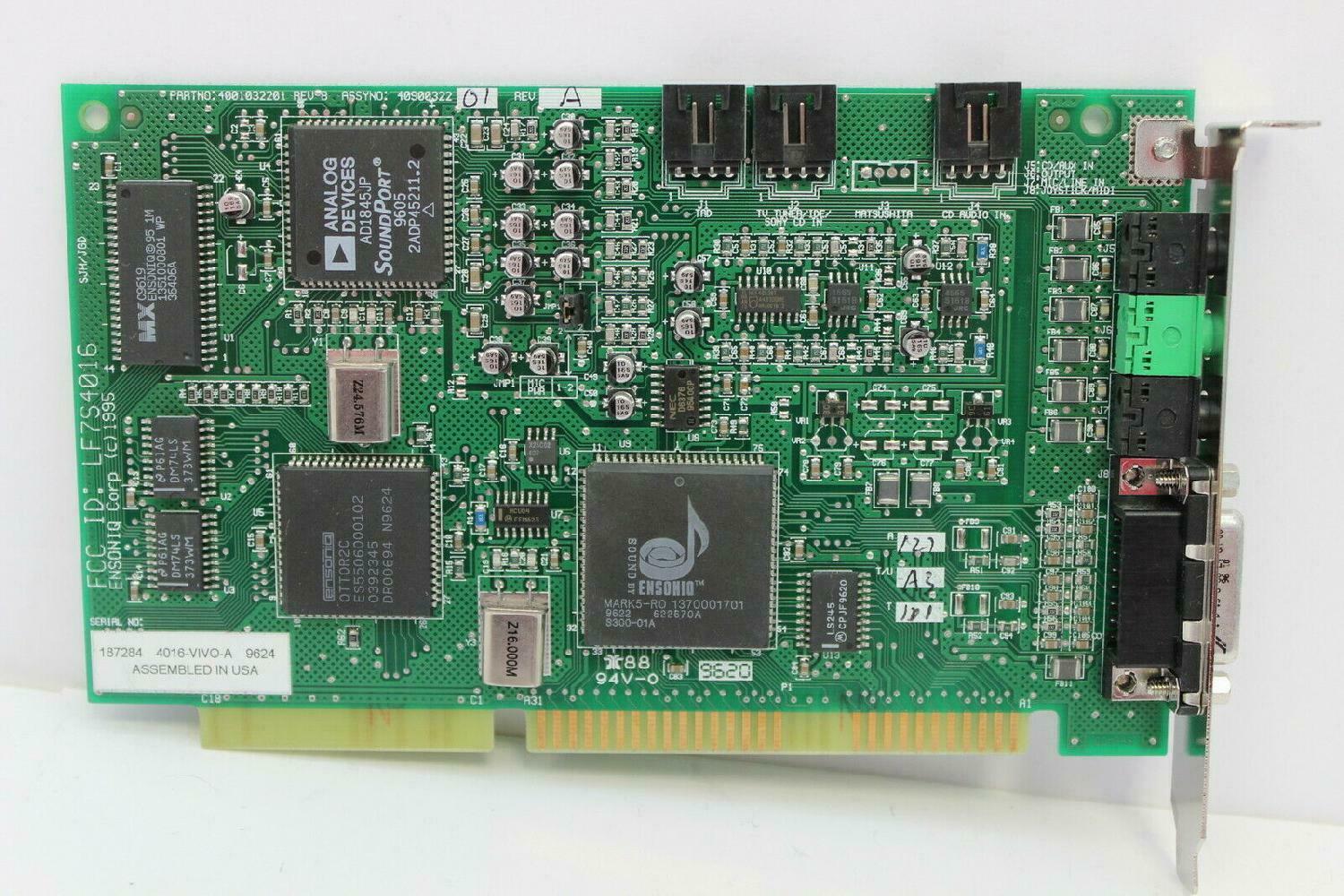 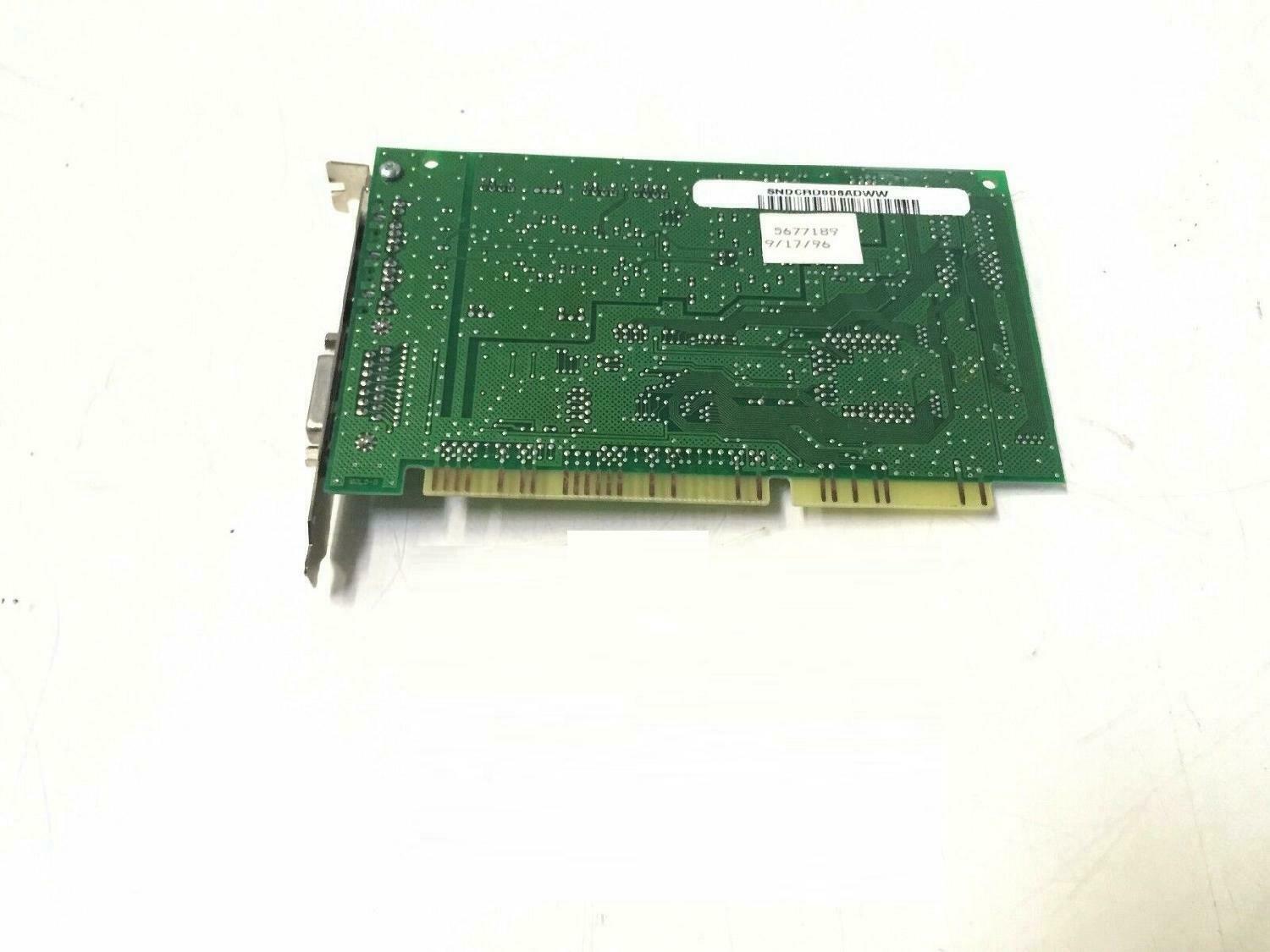 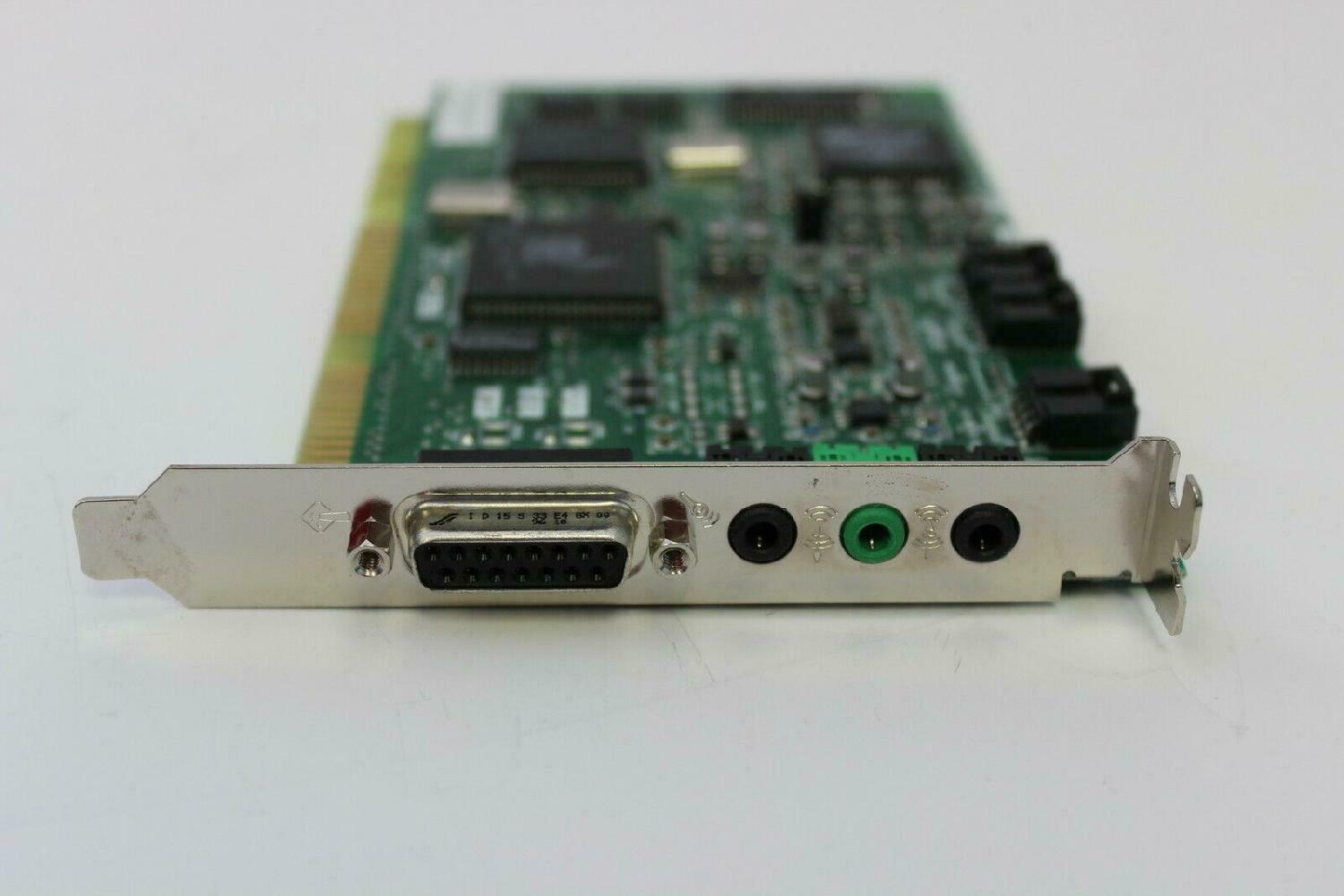
|
 Ensoniq
Ensoniq










